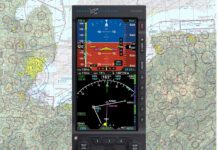One of general aviation’s worst characteristics is that it’s not very environment-friendly. Putting aside (please!) the continued presence of lead in the vast majority of aviation gasoline, the typical aircraft piston engine is neither fuel-efficient nor clean-burning. That’s what happens when powerplants that haven’t fundamentally changed since before WWII are pressed into service for their second century. There are a lot of reasons for that, not least of which are certification costs and liability, but the fact remains that the engines many of us fly behind or between would have been banned from U.S.-manufactured automobiles more than 50 years ago.
There are many signs this is changing. For one, engines from manufacturers like Rotax and Jabiru feature fuel-efficient and cleaner-burning technologies like computerized fuel injection and electronic ignition. Compression-ignition powerplants (e.g., diesels) also typically burn cleaner and use less fuel for the same output. While diesels remain a small proportion of piston powerplants in the U.S., they’re not overseas, where 100LL availability can be spotty and Jet A abundant.
While there’s no substitute on the horizon for the internal combustion engine powering typical general aviation aircraft, there’s a lot of buzz about electric propulsion. It’s mostly concentrated in the urban air mobility realm, short-range flights of what essentially are drones scaled up to carry passengers. The jury determining whether there’s a viable long-term market for such craft and their use hasn’t even been empaneled yet, and no one is talking about, say, replacing a Bonanza’s IO-550 with an electric motor and its fuel tanks with batteries.
One bright spot is something called sustainable aviation fuel, SAF, which basically is Jet A produced from other than petroleum sources. Think “cooking oil and other non-palm waste oils from animals or plants; solid waste from homes and businesses, such as packaging, paper, textiles, and food scraps,” according to Air BP.
Industry is justifying SAF as a way to reduce the total carbon footprint by up to 80 percent “over the lifecycle of the fuel compared to traditional jet fuel it replaces, depending on the sustainable feedstock used, production method and the supply chain to the airport,” again according to Air BP. Some operators have flown demonstrations 100-percent powered by SAF, but it’s typically blended with fossil-fuel Jet A.
While SAF is an admirable effort, it does nothing about high-altitude emissions and isn’t widely available. It also isn’t available for spark-ignition engines. The bottom line is that aviation, and especially personal aviation, isn’t a very green endeavor, something that’s not likely to change soon.
— Jeb Burnside




